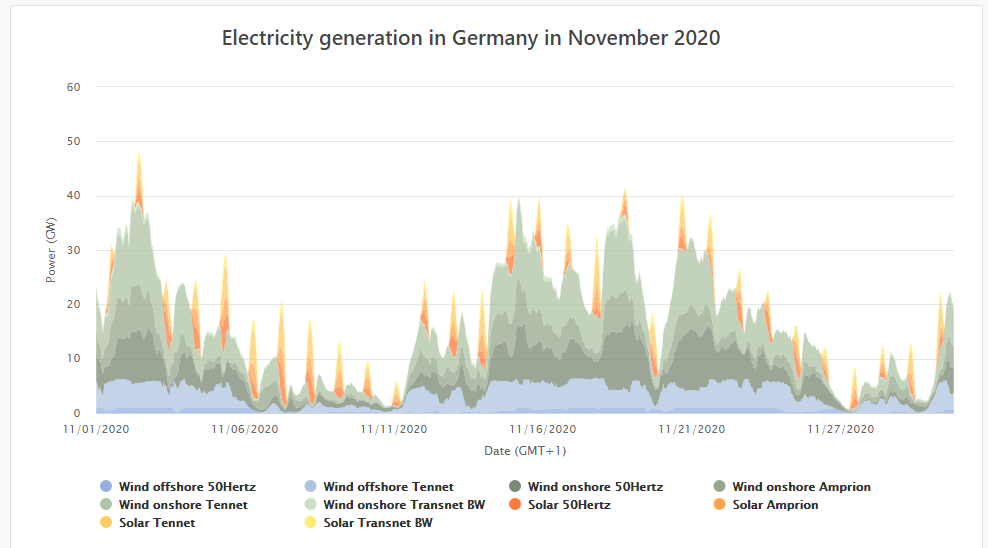I have not been inside an industrial plant like that, but have read that aluminum smelting takes a lot of electricity. So, let's find out how much electricity a smelter takes.
So, let's say our smelter has 500 pots, and produces
500 tons/day of Al.
The number just falls out from there. Our smelter will need 15 kWh/kg * 500,000 kg/day = 7,500,000 kWh/day.
Now, how long is a production day? Running only 1 shift or 24 hours?
Let's spread out the load, and run 24 hours. Then, the power demand is 312.5 MW.
If we want to work only 8 hours, then the power would be 3x or 937.5 MW, or rounded up to
1 Giga watt.
Let's go build a solar farm to get this power.
Oh wait. The sun does not shine 24 hours. So, the 8-hr number of 1 GW is closer.
Here's a typical 1-MW solar farm. We will need
1000 of these!
But the above 1 MW solar farm only produces its peak 1 MW at noon. Early and late in the day, the power will be lower due to the sun angle. And it will vary with the season too.
Let's then look at the annual power output.
Our smelter will need
2.7 billion kWh/year. Where I am in the Southwest, a 1-MW solar farm will generate 1.776 million kWh/year.
We then need
1541 solar farms, each of 1 MW like the one in the photo.
PS. The cost to build a 1 MW solar farm is about US$1M not including the cost of land. Our total 1.5 GW solar farm will cost $1.5 billion. Space wise, a 1 MW solar farm takes 5 acres. Then, the 1.5 GW farm will be
12 square miles.
PPS. The world total aluminum production was
65.3 million tons in 2020. That's the output of 358 smelters like ours. The total solar farm will be
4,300 square miles. That's almost the size of Los Angeles County!


